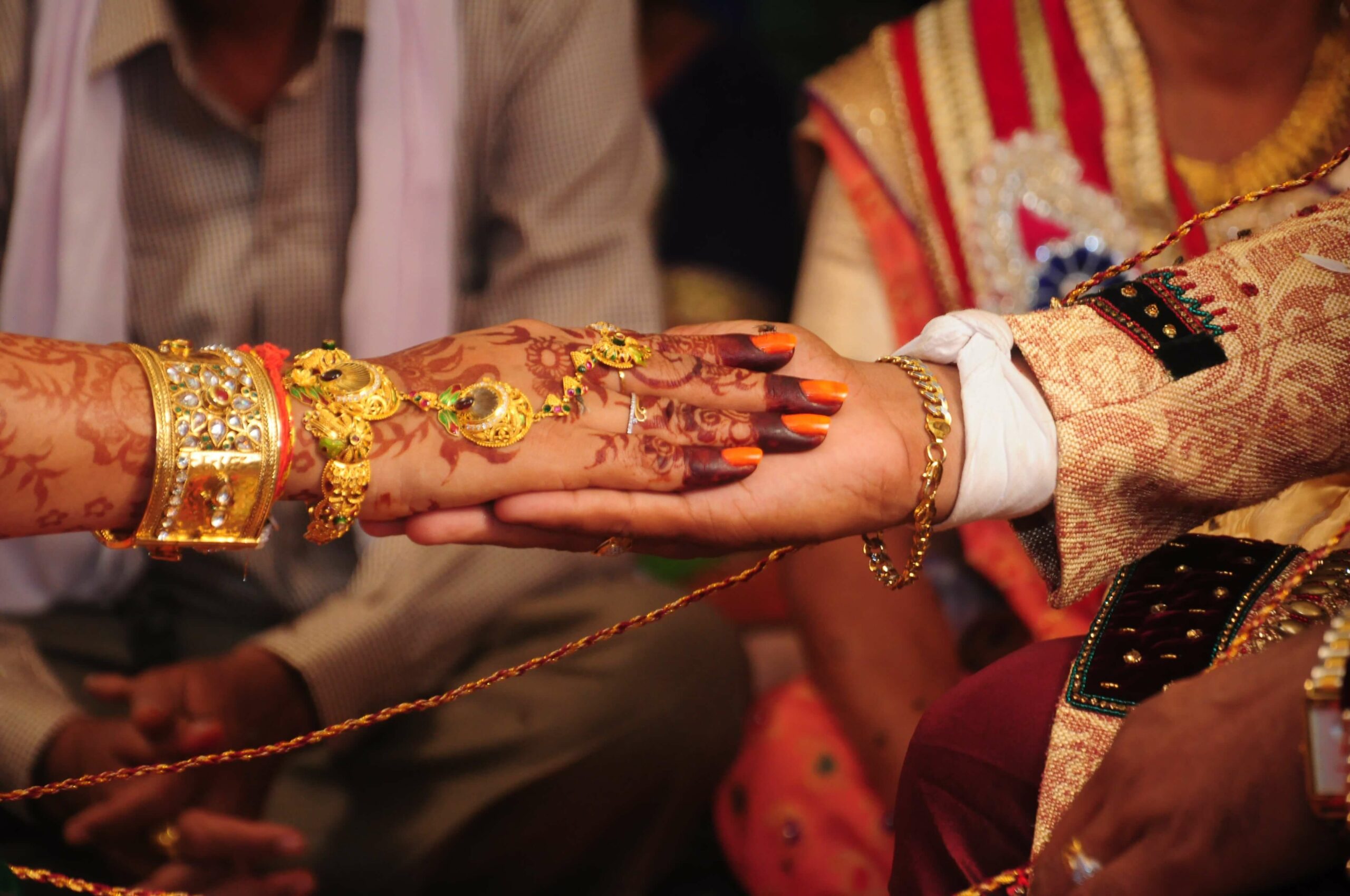They talk about weddings in the west being a big deal, but in Hindu culture, it’s a vibrant, three-day-long affair.
A Hindu wedding straddles the line between revelry and sacrament, and it’s a time for one’s loved ones to come together to help celebrate the merging of two families.
Here are some of the traditions you might find at a Hindu wedding.
10 Hindu Wedding Traditions and Rituals
1. Hindu Weddings Are Long
A Hindu wedding lasts three days, with various events stationed each day.
Traditionally, participants time these events to align with fortuitous moments as ordained by the priest involved in the ceremony. It is common for many events to take place in the early morning.
If you’re invited to a Hindu wedding, block out an entire two days for it, unless you’re a close family, and then it’s best to block out all three.
The entire wedding process is a time of celebration and great happiness! It’s the merging of two families, so prepare to be on board for the whole itinerary.
It’s important to note that according to tradition, three days is the shortest time you can expect a ceremony to last. Even in the modern era, it’s not unusual for some parts of the rituals to take place weeks or even months before the main event.
A Hindu wedding takes six months to complete. The traditions and rights are determined based on the positioning of the stars. Rather than setting dates, it’s all predetermined. The tradition that begins six months before cementing the family alliance is essential.
2. Hindu Weddings Are Big!
You don’t invite just friends and family to a Hindu wedding. A modest ceremony still consists of 150-200 guests, and it is common to invite the entire town, which holds even today.
In Hindu culture, weddings are sacred and involve the entire extended family. Things that bring everyone together are often at the center of a community. A wedding is an excellent reason to bring people together to celebrate with the families involved.
3. The Baraat
A Hindu wedding involves a parade with luxury cars, booming music, and even a horse. When the groom and his family arrive, they do so in a big way to catch the attention of everyone in the area.
Expect singing and dancing. Expect a band to signal the arrival of the procession at the venue. The entire point is to be a spectacle, which it often is.
The parade sets the tone for much of what’s to follow, including a spectacle of colors, music, and good food to be shared by everyone participating in the celebration.
4. The Ganesh Puja
In Hindu culture, it is mandatory for a wedding to begin by invoking Ganesh, the remover of obstacles. Lord Ganesh is the elephant god, and he is known for being a bringer of prosperity. A prayer to Ganesh before the wedding begins lays the groundwork for everything that is to follow, an appeal for the next events to be without struggle and to go smoothly forward.
The Ganesh Puja goes far deeper than simply a blessing on the wedding ceremony. This tradition places a blessing on the marriage as a whole. There’s plenty to follow once the ceremonies close, and Ganesh’s favor can bring prosperity for the years that follow.
5. The Mehndi
The Mehndi is the part of the wedding where the bride has henna applied to her hands and feet. During the Mehndi, there is music and more celebration. People participating in Hindu weddings and traditions widely regard it as one of the most colorful parts of the entire process.
The Mehndi is essential because these steps are all aimed at beautifying the bride before her wedding. The henna is only one part of the tradition out of many, but it is the one most people tend to think of first.
6. The Seven Steps
This is the part of the wedding where the couple is physically tethered together and walks hand in hand around the Agni. The Agni is a fire representing a Hindu deity who dispels ignorance and lights the path in front of them. Before they start a circle around the fire, they speak the closest thing a Hindu wedding has to vow to one another.
Each circle is called a “Phera.” The groom leads for the first four, while the bride leads the last three. During each pass, they recite different but complementary vows.
The First Phera: A Prayer for Food and Nourishment
The first phera is to take care of themselves and their family and to provide in accordance with tradition.
The Second Phera: A Prayer for Strength
The second phera is to develop their mental and spiritual powers to remain loyal and faithful to one another.
The Third Phera: A Prayer for Prosperity
The third phera is a prayer to increase their wealth and comfort by righteous and spiritual means.
The Fourth Phera: A Prayer for Family
The fourth is to acquire knowledge, happiness, and harmony through mutual respect and trust in their families.
After the fourth phera, the couple switches, so the bride leads the groom around the fire.
The Fifth Phera: A Prayer for Progeny
The fifth phera is to be blessed with strong and virtuous children.
The Sixth Phera: A Prayer for Health
The sixth phera is to be blessed with long and healthy lives.
The Seventh Phera: A Prayer for Love
The seventh and final phera is for the couple to remain true companions, committed to only each other.
7. Traditionally, There Is No Kiss
Although this isn’t true of every contemporary Hindu wedding, traditionally, the ceremonies do not include a kiss at the end. Instead, there is an exchange of rings and the placing of Sindhoor at the parting of the bride’s hair.
Hindu culture is traditionally very conservative. However, some couples may choose to kiss at the end of the ceremony, particularly in the west, where people consider this normal. Nevertheless, it should come as no surprise if it doesn’t happen.
8. Traditionally, There Is No Alcohol
A Hindu wedding is a holy ceremony; though it is a huge party, it isn’t the kind that involves drinking. However, some more contemporary weddings break this tradition and include alcohol–particularly in the west. But for the most part, a Hindu wedding is considered a sacred ceremony, and the people taking part are expected to be sober for it.
That doesn’t make it a drab affair; far from it. Hindu weddings are vibrant and colorful festivities with abundant music and dancing. Everyone involved dresses to the nines, and there are typically many guests to talk to and mingle with.
9. The Bride Dresses in Red
Hindu brides’ dress in red! In western culture, the white dress symbolizes virginity, but the red dress at a Hindu wedding represents passion, prosperity, and new beginnings. It is also the color associated with the goddess Durga.
Red is also associated with Mars, the planet that rules marriage in the culture. Astrology is held as being very important in Hindu culture, with the positions of the stars and planets dictating the timing for many things and the horoscope being held in reverence.
Since the bride wears red, wearing red is off the table if someone invites you to a Hindu wedding. People also consider wearing red in Western culture rude because it’s overtly flashy. But you’re mistaken if you think that clears you to wear white instead.
In Hindu culture, white is a funeral color, and black is also generally a bad idea because it’s considered unlucky. So while black and white are stained in misfortune and mourning, there are many other colors to choose from that would suit perfectly fine, including yellow and green.
Everything the guests wear to a Hindu wedding is meant to be flashy, and a little bit over the top by Western standards, and the general rule is to start with your most subdued outfit, accessories, and jewelry and amp it up with every day that passes.
Save your flashiest outfit for the third day, when everyone will go all out. Remember, this is a time of celebration rather than a solemn ceremony. Some Hindu weddings are meant to be more serious, but being serious and solemn is not the same thing, and just because something is sacred does not mean it can’t be a festive time and a huge party.
10. Blessings
After the ceremony, there will be time for people to bestow blessings upon the newly married couple. The already married women in attendance will come up to the bride and whisper their good wishes in her right ear.
If you intend to bring a gift, have it sent to the bride and groom’s home unless the gift is one of money, in which case protocol is to give it to them in person at this time and concealed in an envelope. Well wishes are considered highly important, so give the bride and groom your blessings if given a chance.




